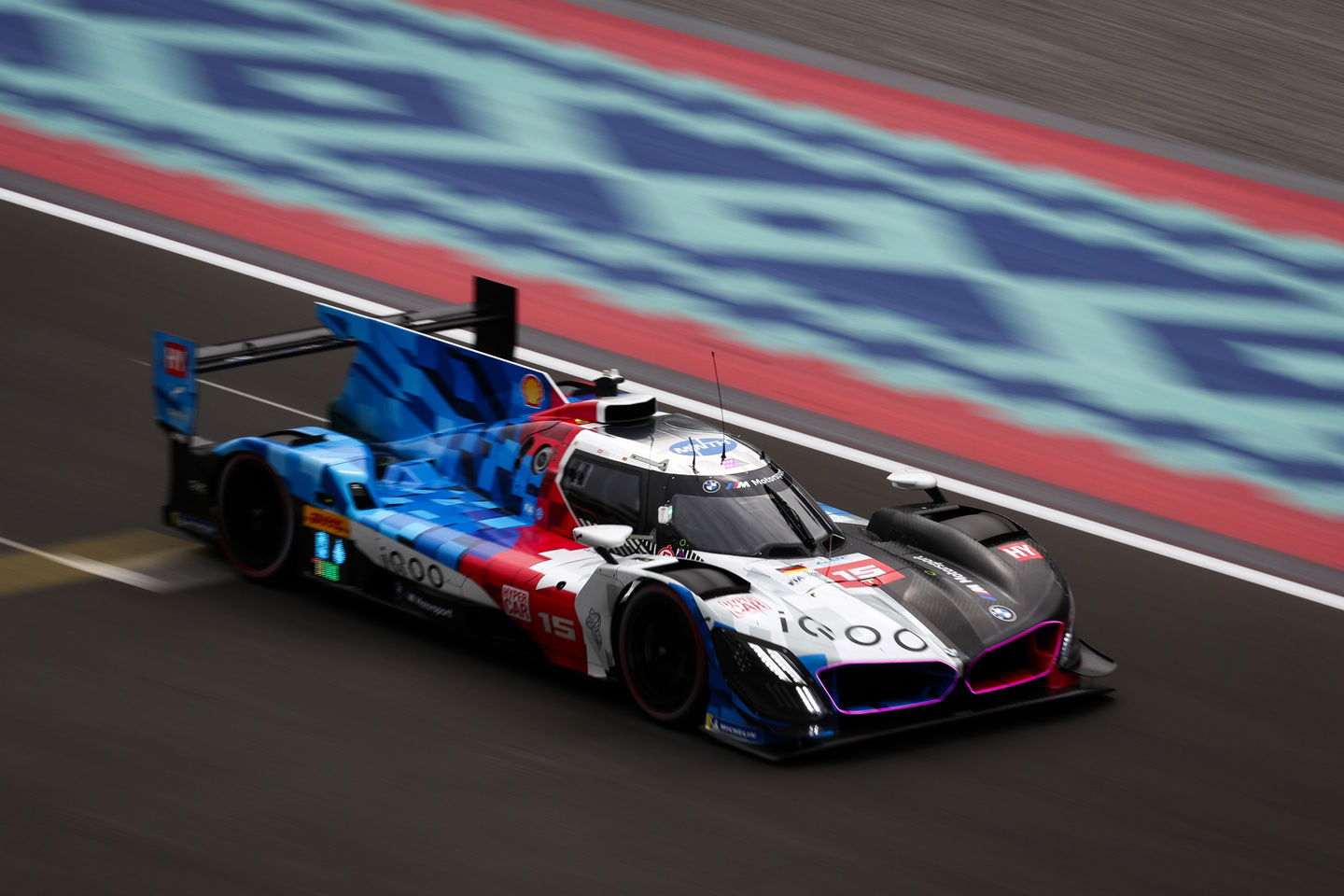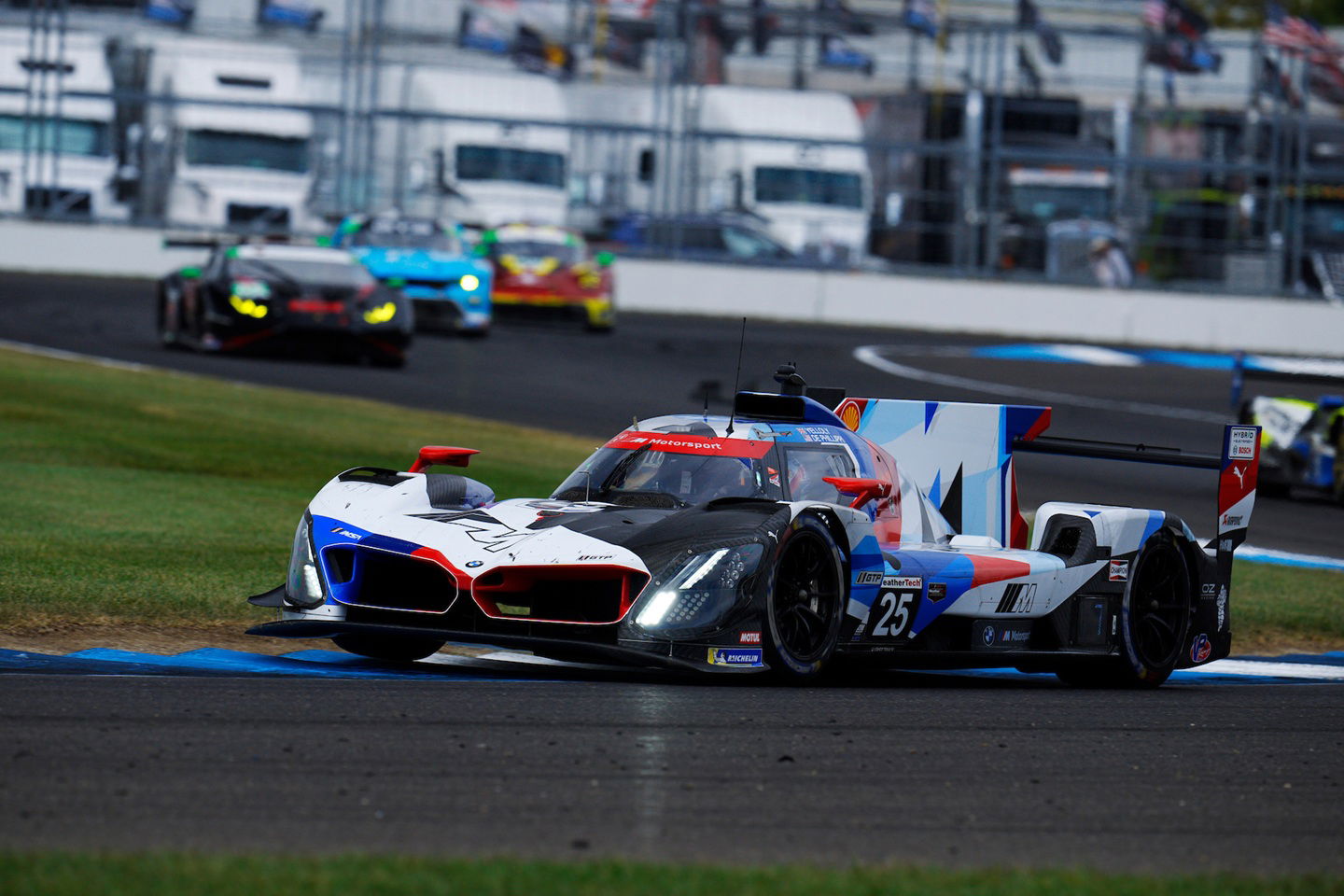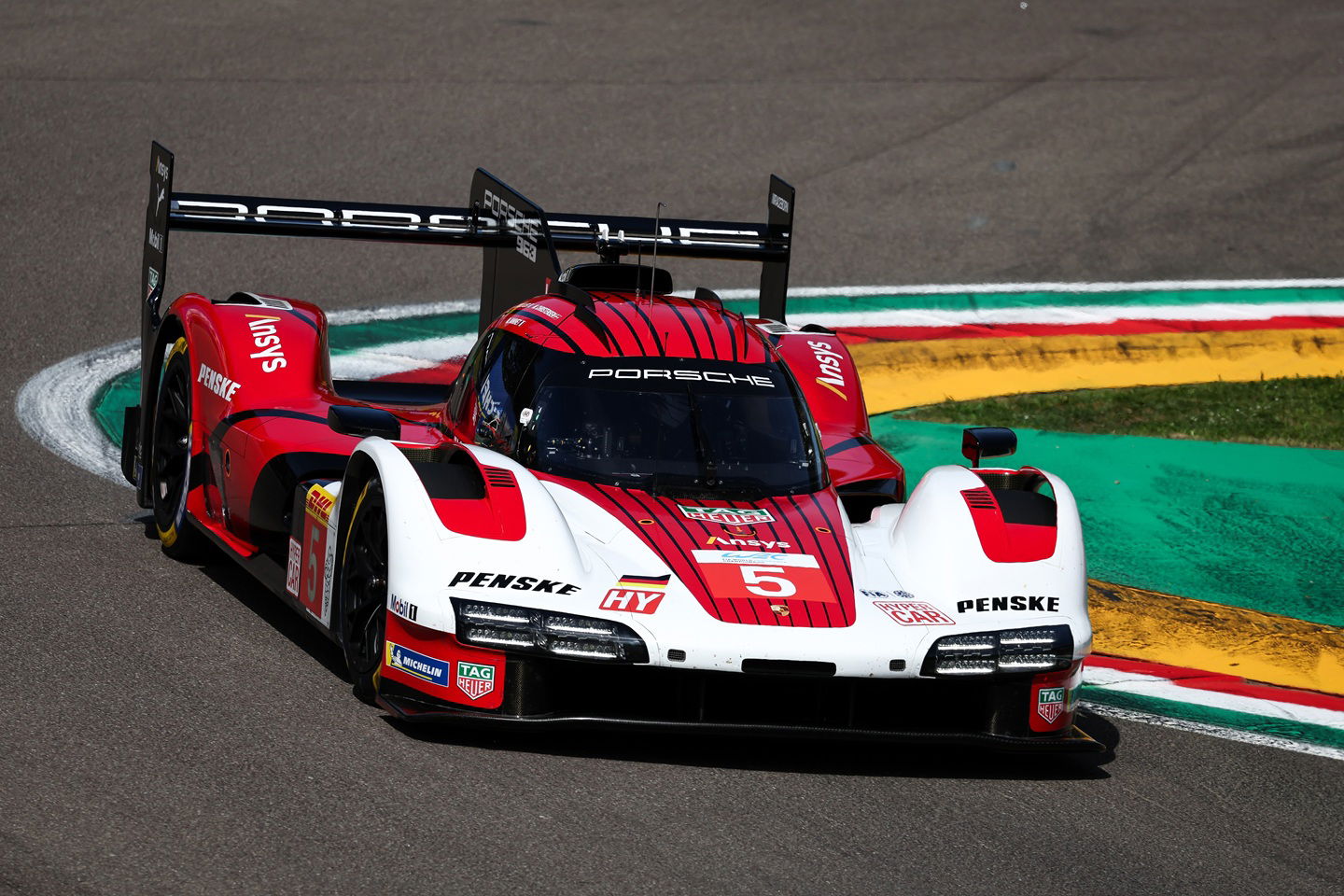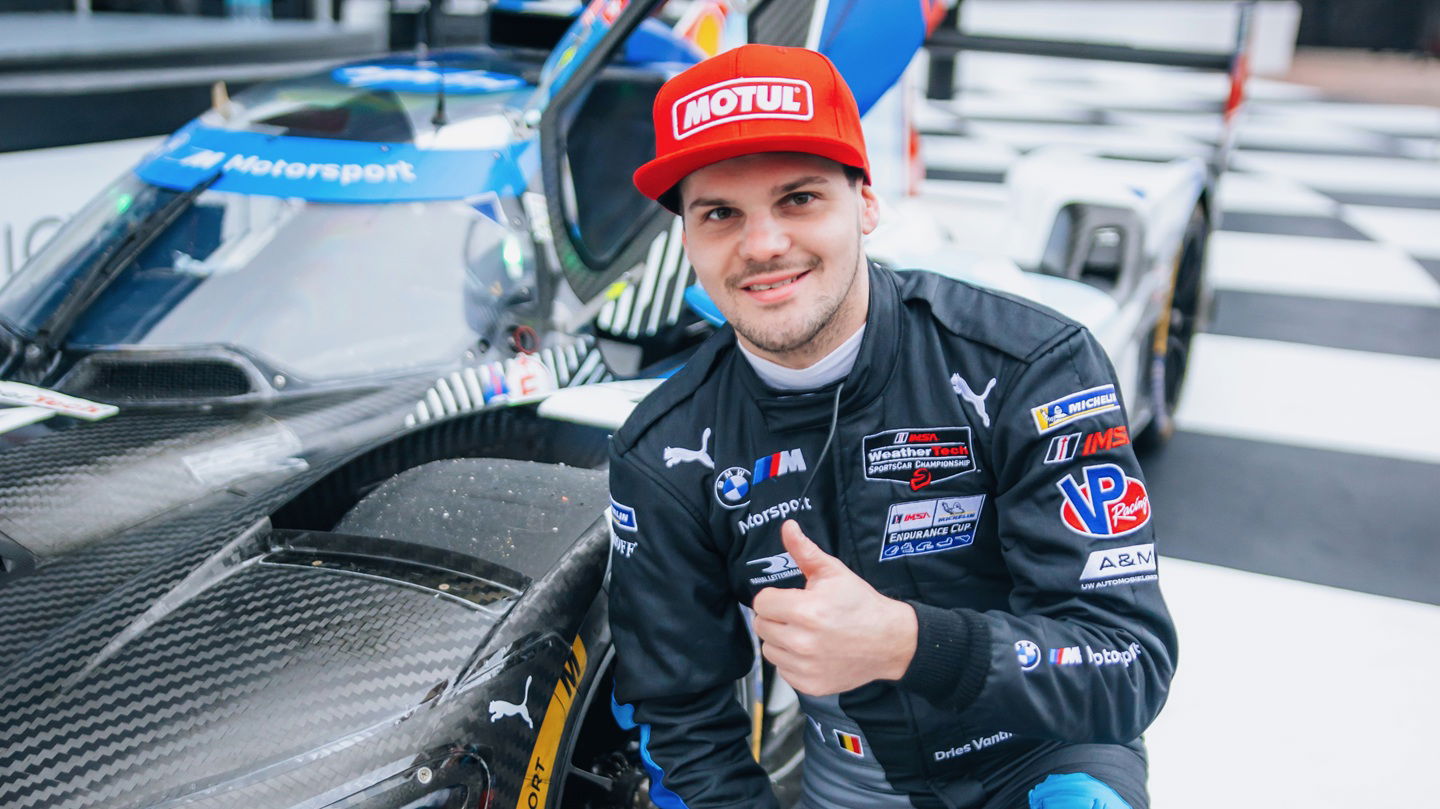How BMW turned around its LMDh programme in WEC and IMSA
BMW's LMDh squad has gone from being a midfielder to a serious contender for victories in a short period. Here’s a look at its impressive ascent up the order in WEC and IMSA.

To say BMW has made massive strides with its LMDh programme in the last seven months would be an understatement. The Munich-based manufacturer can now regard itself as a genuine frontrunner in both the World Endurance Championship and the IMSA SportsCar Championship, something not many could have foreseen in the early days of the M Hybrid V8 programme.
BMW was one of the first four manufacturers to develop a car to LMDh rules when the formula was introduced in 2023. This was the start of BMW’s first top-line sportscar programme in almost 25 years and, given the BMW V12 LMR was a winner at Le Mans, expectations were naturally high for its spiritual successor.
But the marque’s first season in IMSA, run in collaboration with long-time GT partner Rahal Letterman Lanigan Racing, could best be described as moderately successful. The #25 M Hybrid V8 driven by Connor de Philippi and Nick Yelloly did score a victory at Watkins Glen, but it only inherited first place after the leading Porsche was disqualified post-race for excessive skid block wear.
When BMW expanded its LMDh programme to the WEC’s Hypercar class in 2024 in collaboration with WRT, things again got off to a slow start. There was limited progress in IMSA too, which was particularly concerning given the leap fellow German marque Porsche had made in its sophomore year with its 963 LMDh.
Dries Vanthoor put together an incredible lap at Circuit de la Sarthe to snatch pole position for BMW at Le Mans, but the race itself showed that BMW was still lagging behind its rivals.
The turning point for BMW came in September last year, with a strong showing in Austin being followed by its maiden WEC podium in the 6 Hours of Fuji.
The IMSA side of the operation proved the second-place finish at Fuji was no fluke just a week later, scoring an emphatic 1-2 result in the Indianapolis enduro. Unlike the previous win at Watkins Glen, this was purely on merit, with the Dallara-based prototype genuinely the class of the field in the “Battle on the Bricks’.
BMW was clearly making progress in exploiting the full potential of the M Hybrid V8, and this was finally visible on track.
“We clearly showed a very positive tendency in the second half of 2024,” BMW motorsport boss Andreas Roos told Crash.net.
“Already having the quickest lap time in qualifying at Le Mans showed the potential of the car is there and we steadily increased it and performed better and better towards the end of the year.
“Also, the double victory in Indianapolis and a podium result in Fuji.
“A big part of it was just to get more understanding about the car and to work together with the drivers, the teams and everything, to work mainly on driveability and also making the car more predictable so the drivers can trust the car and also have the trust to go closer to the limit. And this at the end is performance.”

However, while BMW was getting more and more out of its existing package, there were still some inherent weaknesses with the car that needed to be fixed.
As a result, BMW decided to use the first of its five evo jokers allowed over an initial five-year lifespan to upgrade the brakes on the M Hybrid V8.
While the previous brake system didn’t have an adverse effect on the performance of the car during qualifying, as attended by Vanthoor’s pole lap at Le Mans, it severely compromised the driveability of the car during races, while also increasing tyre wear.
“For 2025 we updated the car with the joker on the brake side and this was another step in terms of predictability and raceability for the car,” Roos explained.
“It's not that the joker brought one-tenth or something in terms of pure lap time. It's just consistency and predictability, and this helps the driver to be more comfortable and trust the car.
“This also helps us to do endurance racing, to have a car which is predictable for the whole race distance.”
The upgraded BMW has proved to be a rocket ship in qualifying so far, particularly in the hands of Vanthoor.
The Belgian qualified the car on pole position in all three IMSA rounds so far, while a front-row start in Qatar was another indication of the M Hybrid V8’s stonking one-lap pace.
BMW also feels the car has been competitive in race trim, with only a “bit of luck and small mistakes” preventing it from scoring a third victory in GTP/Hypercar.
At Daytona, for instance, Vanthoor led the early stages of the race until a small error while stopping in the pit box cost him the lead. Later in the final hour of the enduro, a loose nose prevented him and BMW from taking the fight to eventual winner Porsche.
However, despite some errors and misfortune, BMW sits a strong second in the manufacturers' standings in IMSA, trailing only Porsche, which has won all three races so far.
It’s a similar story in the WEC, with BMW only lagging behind runaway leader Ferrari in the opening races in Qatar and Imola.
Between the two championships, it has scored two podiums so far, with its best result being a second-place finish in the Italian round of the WEC.
While the M Hybrid V8 has made a substantial leap in performance, a manufacturer like BMW will never be happy with being second-best in class.
“In championships like this, WEC or IMSA, the competition is so, so high that you have to put so much attention to detail and everything has to be spot on and perfect,” said Roos.
“It's starting from tyre pressure to making no mistake, being reliable, the drivers, the pitstops - everything has to work out and be perfect. This is where we work on and then for sure you also need a bit of luck.
“But I think we made big steps and now we have to get everything together. In the end, you also have to have a final bit of luck and then hopefully we will end up on the podium and maybe also on the top step.”

At the moment, BMW is not planning any further upgrades to its LMDh challengers as it focuses on maximising its existing package.
Asked if BMW is satisfied with the current version of the car, Roos said: “There is always room for improvement, you can always improve.
“I am not the biggest fan of these evo jokers or performance jokers. In the end, we are also competing in a BoP championship.
“There will always be areas and specific topics where you can think about taking a joker and improving the car, but the first step always has to be that you maximise the package that you have.
“When we started in 2023, everybody said we have to take a joker. I said no, first of all, we have to use the 100 per cent potential of the car, and when you use the 100 per cent and there is still an area where you have to improve, like we saw for example on the brake system where we clearly said we have to make a change to do the next step, then you can do it.
“Before you have not reached to extract the 100 per cent potential of what you have, you should not think about using a joker.”
BMW will face its next challenge on the weekend of 10/11 May, when it will concurrently compete in the WEC race at Spa and IMSA’s 160-minute fixture at Laguna Seca.


